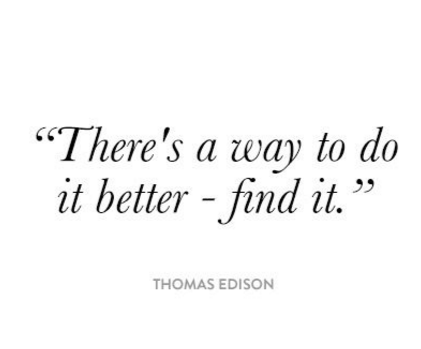Tag: practice imagination
How Schools Can Improve their Product of Learning
What do you believe is the major product of schools? My opinion is to achieve the ability and desire of students to learn new things. That is the product of learning! The change we are in the middle of isn’t minor and it isn’t optional. –Clay Shirky As Clay describes the digital internet age, it is…

Innovation Quotes … 10 Fantastic Lessons from the World’s Best
Nothing works better defining great lessons that the best innovation quotes from the masters on this subject. Here you find 20 of my personal favorites. I have used them to derive ten innovation lessons to learn from. Check out our thoughts on building innovation. Our agency focuses on creativity and innovation. From time to time we’ll…